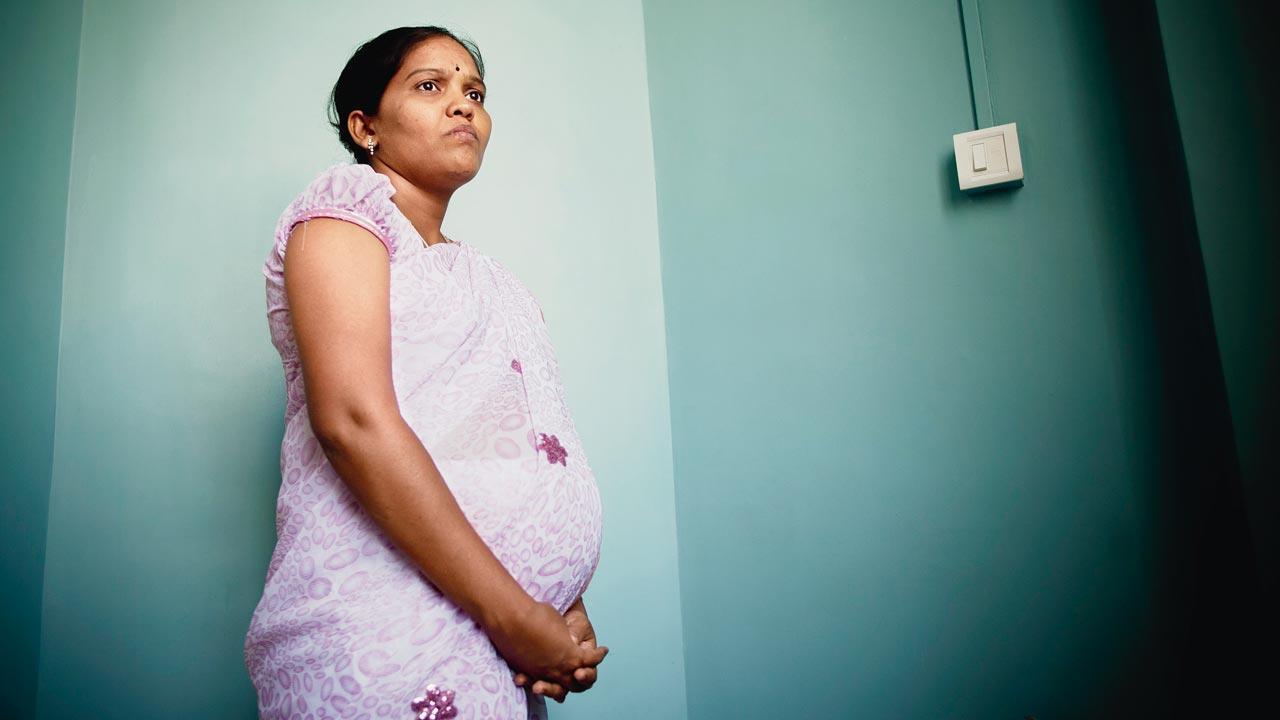A literature review by six Indian scientists points to a disturbing find—that the vulnerable mother’s exposure to air pollution may adversely affect the baby physical and mental health

The literature review, through studies on air pollution and miscarriage, flagged traffic and indoor air pollution as sources of concern Representation pic
The World Health Organisation (WHO) estimates that globally, air pollution causes over seven million premature deaths each year, because of reasons such as ischemic heart disease, stroke, chronic obstructive pulmonary disease, lung cancer, and pneumonia. However, research has found, air pollution may be linked to miscarriage as well.
A recent literature review by six Indian scientists, published in Springer Nature Journal, investigated the link between air pollution and miscarriage, by analysing 45 studies published between 1982 and 2023, from China, the US, Africa, Italy, and Iran, and a few from Sweden, South Asia, Finland, Brazil, India, Turkey, Russia, and Mongolia. The studies looked at both short-term and long-term exposure to single and multiple pollutants.
ADVERTISEMENT
“Considering the World Health Organisation definition, which defines spontaneous abortion or miscarriage as the termination of pregnancy by the expulsion of an embryo weighing less than 500 grams before 22 weeks of gestation, our study highlighted the most consistent association of spontaneous abortion with particulate matter—PM 2.5 and PM 10, followed by nitrogen dioxide, sulfur dioxide, and ozone during the first trimester of pregnancy (i.e., gestation period),” says Priyadharshini Babu, the lead researcher of the study, who worked with Vaishali Verma from the Department of Biotechnology at Bennett University; Swapna Sarika Khadanga from the Centre for Biotechnology, Siksha ‘O’ Anusandhan; Shailendra Kumar Yadav from Babasaheb Bhimrao Ambedkar University, Dudam Bharath Kumar, Department of Civil Engineering, Chaitanya Bharathi Institute of Technology; and Ayushi Gupta of Knowledge Resource Centre, Azim Premji University.
What this means is that exposure to pollutants during the first trimester of pregnancy could affect the health of the foetus. While the study was not aimed at finding a correlation and causation effect, it draws attention to the possible impacts of pollutants on developing foetuses. Exposure to pollutants can occur through many sources—ambient air pollution, working in occupations that expose you to pollutants, traffic, open fires, and desert dust. By and large, however, traffic pollution exhibited the most harmful impact, which may pose an issue for women in metro cities like Delhi, Mumbai, and Bengaluru.
“We scrutinized 45 research papers, of which 24 emphasized the effects of ambient air pollution; in contrast, only two studies explored traffic-related air pollution (TRAP). Despite the limited number, TRAP studies showed consistent adverse impacts on pregnancy outcomes,” says Babu, who is an assistant professor at Tamil Nadu’s Centre for Disaster Mitigation and Management, Vellore Institute of Technology.
It also highlighted the fact that certain demographics of the population are particularly vulnerable to air pollution. “Certain age groups, including children, the elderly, and pregnant women, have unique vulnerabilities and predispositions to the effects of air pollution due to several factors,” Babu explains. “Pregnant women undergo physiological changes associated with pregnancy, such as alterations in the endocrine system, increased inhalation rates, and improved cardiac outputs that make them susceptible to air pollution.” The reason why they are vulnerable is because of two factors: physiological factors and exposure to pollutants.
Physiologically, because young children still have developing respiratory, immune, and metabolic systems, they are at higher risk—and they spend more time in open spaces. “They have faster breathing rates and smaller lung capacities than adults, potentially inhaling more pollutants per unit of body weight,” Babu says. Older people are at risk because of underlying health conditions.
The study concluded that pregnant women spend more time at home than at work, so it is possible that indoor sources of air pollution might pose a risk as well. More awareness is needed in this area, the researchers note: making pregnant women aware of the kinds of pollution that can have an impact, so that they can take preventive steps to avoid it.
 Subscribe today by clicking the link and stay updated with the latest news!" Click here!
Subscribe today by clicking the link and stay updated with the latest news!" Click here!








